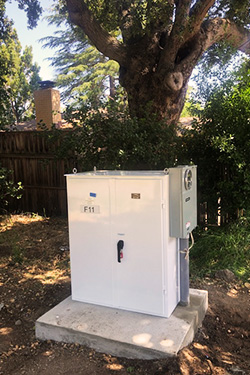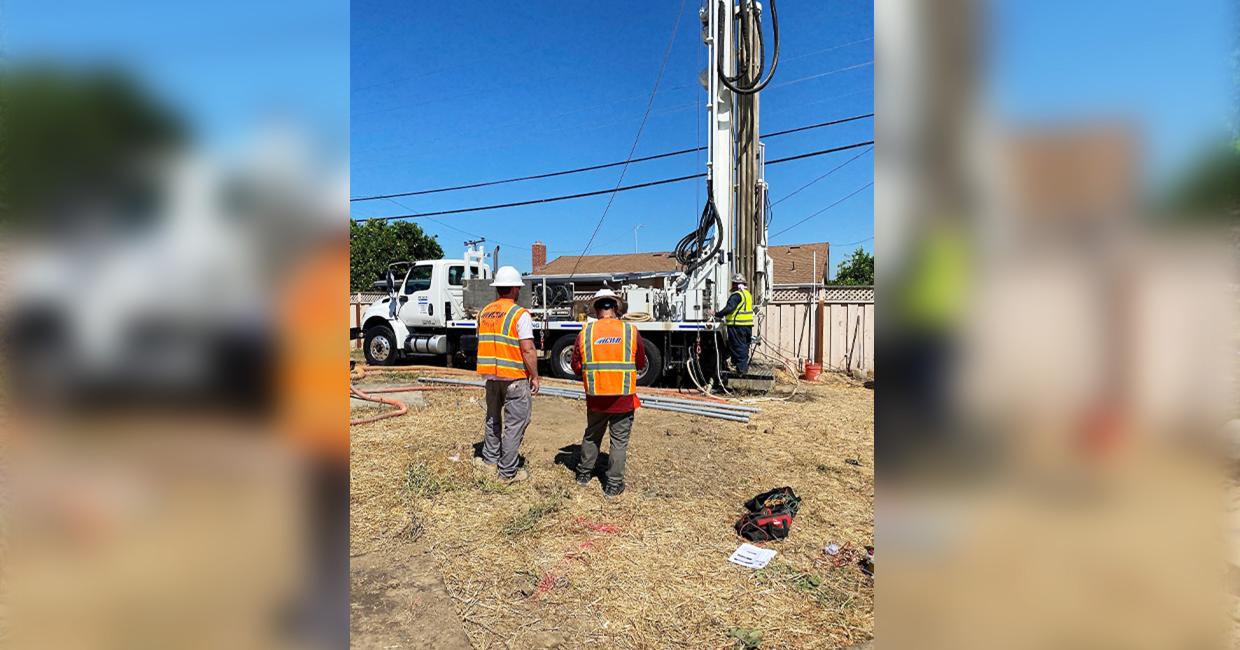Above ground, it looks like a cabinet of sorts. But what you might not know is that buried deep underground, attached to it, is a metal rod that protects our underground pipelines.
Protecting Water Pipelines
The backbone of the San Francisco Public Utilities Commission's (SFPUC) water distribution network consists of hundreds of miles of transmission pipelines. These pipelines supply water from Hetch Hetchy and SFPUC's regional reservoirs to 2.7 million people in the Bay Area. Made of steel, these pipelines are susceptible to the forces of nature and can corrode and weaken over time. To prevent this from happening, the SFPUC uses a chemical process called "cathodic protection."

How Cathodic Protection Works
Cathodic protection prevents corrosion from happening by applying a protective current from an external power source through a metal rod called an “anode,” which is drilled deep underground next to the pipeline. The protective current then passes through the ground from the anode to the pipeline. This electrical current flow then causes the anode to corrode, rather than the pipeline.
The SFPUC is currently completing a second round of cathodic protection installations, at 11 sites in the East Bay and on the Peninsula. After SFPUC engineers determined optimal locations for these sites, a contractor was hired to install these anodes and the rectifiers that provide the direct electrical current to them.
This involves burying the 10-foot-long anode to a depth of 50 to 300 feet, and then connecting the apparatus to a power source. When construction is complete, the only thing visible above ground is the small rectifier cabinet. As a result, the SFPUC is able to protect transmission lines without impacting the areas where cathodic protection is in place, often in residential neighborhoods or business areas.
A cathodic protection system is a cost-effective way to protect buried steel transmission pipelines from the corrosive water and soils around it.


